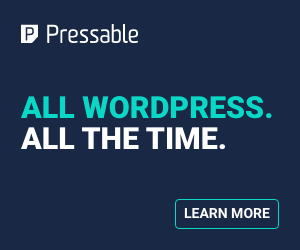02-03-2005, 07:52 AM
=====================================================================
WHAT IS XML
---------------------------------------------------------------------
Extensible Markup Language (XML) provides a way to describe structured data. Unlike HTML tags, which are primarily used to control the display and appearance of data, XML tags are used to define the structure and data types of the data itself.
XML uses a set of tags to delineate elements of data. Each element encapsulates a piece of data that may be very simple or very complex. You can define an unlimited set of XML tags. For example, you might define XML tags to declare pieces of data from a purchase order, such as the price, tax, shipping address, billing address, and so on. As XML tags are adopted throughout an organization and across organizations, data from all kinds of different data stores will be easier to exchange and manipulate.
XML is simple, platform-independent, and a widely adopted standard. The advantage of XML over HTML is that it separates the user interface from the structured data. This separation of data from presentation enables the integration of data from diverse sources. Customer information, purchase orders, research results, bill payments, medical records, catalog data, and other information can be converted to XML.
=====================================================================
USES OF XML
---------------------------------------------------------------------
XML is an extremely flexible way to pass around data. The following are all examples where XML can be used
An ordinary document
A structured record, such as an appointment record or purchase order
Internet/intranet Web applications that move data
An object with data, such as the persistent format of an object or ActiveX control
A data record, such as the result set of a query
Meta-content about a Web site, such as Channel Definition Format (CDF)
Graphical presentation, such as an application's user interface
Links between information and people on the Web
C# code, which can be documented with XML; for more information, see XML Documentation
Discovery documents used to locate available XML Web services; For more information, see XML Web Service Discovery.
The following lists several advantages XML has over other formats when storing information
XML formats are text-based, making them more readable, easier to document, and sometimes easier to debug.
XML documents can use much of the infrastructure already built for HTML, including the HTTP protocol and some browsers. HTTP allows XML to be transferred across firewalls.
XML parsing is well defined and widely implemented, making it possible to retrieve information from XML documents in a variety of environments.
Applications can rely on XML parsers to do some structural validation, as well as data type checking (when schemas are used).
XML is built on a Unicode foundation, making it easier to create internationalized documents.
=====================================================================
This article is taken from microsoft development network resource kit and its 7th point tells us that it can be used as a "Graphical presentation, such as an application's user interface"
For further info (http//msdn.microsoft.com/xml/default.asp).
========================
```*``` I love stars;
*`*`*`* Shining;
`*`*`*` and Smiling;
*`````* Always.
------------------------
[email protected]
http//www.shahid-fss.tk
========================
WHAT IS XML
---------------------------------------------------------------------
Extensible Markup Language (XML) provides a way to describe structured data. Unlike HTML tags, which are primarily used to control the display and appearance of data, XML tags are used to define the structure and data types of the data itself.
XML uses a set of tags to delineate elements of data. Each element encapsulates a piece of data that may be very simple or very complex. You can define an unlimited set of XML tags. For example, you might define XML tags to declare pieces of data from a purchase order, such as the price, tax, shipping address, billing address, and so on. As XML tags are adopted throughout an organization and across organizations, data from all kinds of different data stores will be easier to exchange and manipulate.
XML is simple, platform-independent, and a widely adopted standard. The advantage of XML over HTML is that it separates the user interface from the structured data. This separation of data from presentation enables the integration of data from diverse sources. Customer information, purchase orders, research results, bill payments, medical records, catalog data, and other information can be converted to XML.
=====================================================================
USES OF XML
---------------------------------------------------------------------
XML is an extremely flexible way to pass around data. The following are all examples where XML can be used
An ordinary document
A structured record, such as an appointment record or purchase order
Internet/intranet Web applications that move data
An object with data, such as the persistent format of an object or ActiveX control
A data record, such as the result set of a query
Meta-content about a Web site, such as Channel Definition Format (CDF)
Graphical presentation, such as an application's user interface
Links between information and people on the Web
C# code, which can be documented with XML; for more information, see XML Documentation
Discovery documents used to locate available XML Web services; For more information, see XML Web Service Discovery.
The following lists several advantages XML has over other formats when storing information
XML formats are text-based, making them more readable, easier to document, and sometimes easier to debug.
XML documents can use much of the infrastructure already built for HTML, including the HTTP protocol and some browsers. HTTP allows XML to be transferred across firewalls.
XML parsing is well defined and widely implemented, making it possible to retrieve information from XML documents in a variety of environments.
Applications can rely on XML parsers to do some structural validation, as well as data type checking (when schemas are used).
XML is built on a Unicode foundation, making it easier to create internationalized documents.
=====================================================================
This article is taken from microsoft development network resource kit and its 7th point tells us that it can be used as a "Graphical presentation, such as an application's user interface"
For further info (http//msdn.microsoft.com/xml/default.asp).
========================
```*``` I love stars;
*`*`*`* Shining;
`*`*`*` and Smiling;
*`````* Always.
------------------------
[email protected]
http//www.shahid-fss.tk
========================




